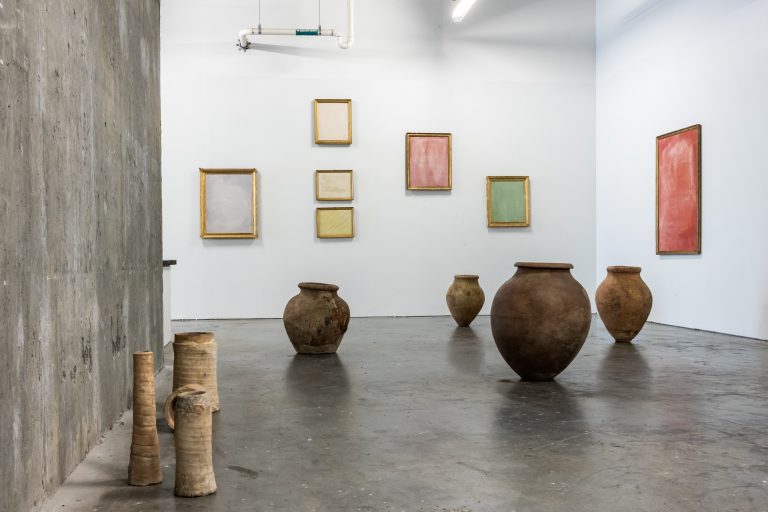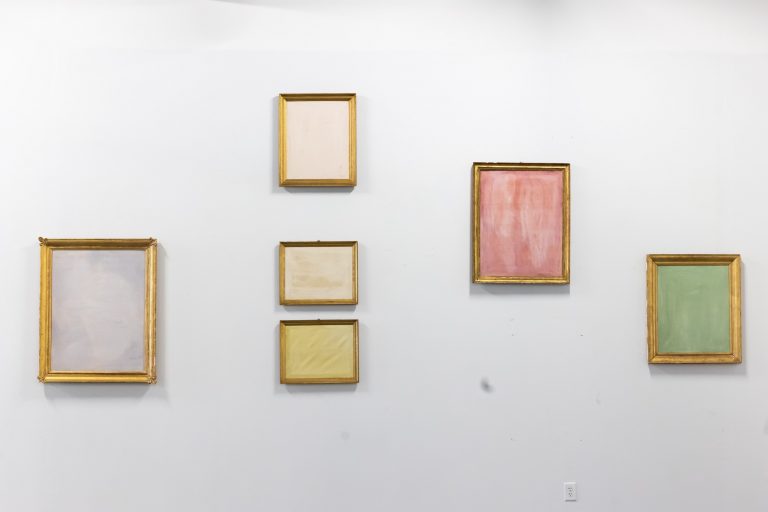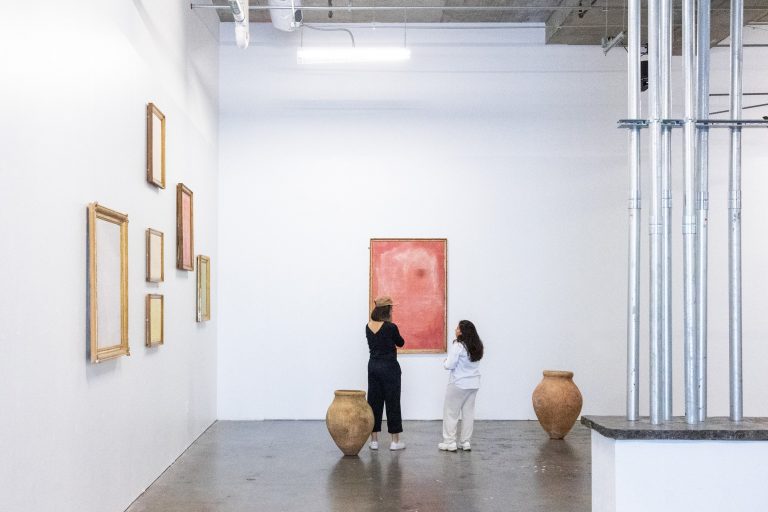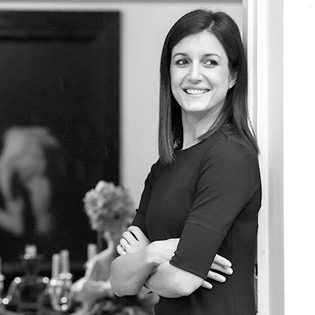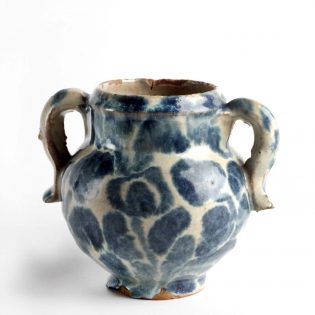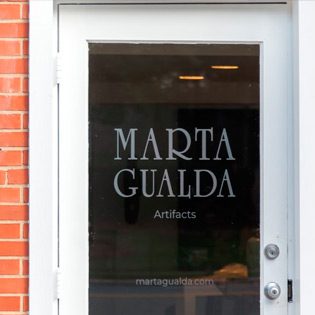Armando Miravalls Bové
(Barcelona, 1916 – 1978)
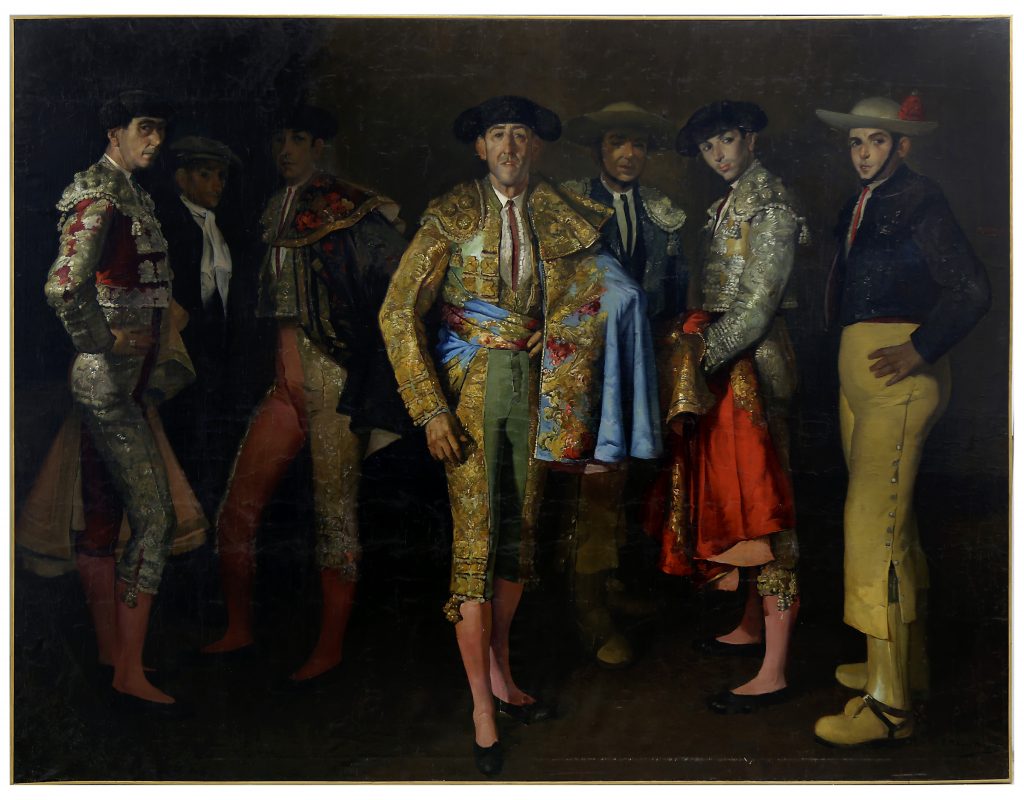
Pedrucho and his gang
Oil on canvas
Signed in the middle lower right
1940’s
82 H x 107 L inches
The tragic hero is embodied in Pedro Basauri Pedrucho, whom Ernest Hemingway saw bullfighting in Barcelona in 1937 during the civil war. Brave but not defiant, with his eyes fixed on the task that awaits him and not on us, Pedrucho is portrayed with his faithful crew, those who will have to face a fate that is still uncertain.
“Neither in Spanish dance nor in bulls does anyone have fun; the goblin takes care of suffering through drama, on living forms, and prepares the stairs for an escape from the surrounding reality”. Words pronounced by Federico García Lorca that speak of life as tragedy and bullfighting as a faithful reflection of it.
On a formal level, the way of presenting the characters, full-length against a neutral background, illuminated by a chiaroscuro light, of multiple focuses, whose origin we do not see, stands out. It is an effective, solemn and dramatic scenographic resource, inherited by Miravalls from the great masters of the Spanish baroque, especially Velázquez and Zurbarán. The figures thus emerge from the gloom in a naturalistic but at the same time symbolic way, with Pedrucho being the absolute center, directly illuminated, capturing our attention completely.
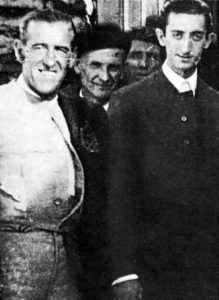 Chromatism is also contrasted, reinforcing this plastic spatial construction of Baroque heritage; on the dark background, yellows and reds, gold and silver of the suits, grana like the blood, fine socks of pink silk, very pure for the hood of the matador, green hope for his suit. Miravalls not only composes an amazing palette of rich and deep colors, but through it builds an authentic metaphor for the fight. In their colors the bravery and the passion of bullfighting are translated, the dance is evoked, the excitement after the triumph and the passion of the bullfighter. In his game of chiaroscuro the mystery is evoked, the fight of man in front of the beast, the dance of death or, as Lorca would describe it, an art of death that is an art of life.
Chromatism is also contrasted, reinforcing this plastic spatial construction of Baroque heritage; on the dark background, yellows and reds, gold and silver of the suits, grana like the blood, fine socks of pink silk, very pure for the hood of the matador, green hope for his suit. Miravalls not only composes an amazing palette of rich and deep colors, but through it builds an authentic metaphor for the fight. In their colors the bravery and the passion of bullfighting are translated, the dance is evoked, the excitement after the triumph and the passion of the bullfighter. In his game of chiaroscuro the mystery is evoked, the fight of man in front of the beast, the dance of death or, as Lorca would describe it, an art of death that is an art of life.
On a technical level, on the other hand, it is a painting of great plasticity: the brushstroke is thick and pasty, recreating in the reliefs and qualities of the fabrics and embroidery of the suits. The light vibrates in the sequins, and the glazes and accumulations of pictorial material perfectly reflect the
To know more about this painting, the artist or the interesting history of the bullfighter, please contact Marta Gualda

